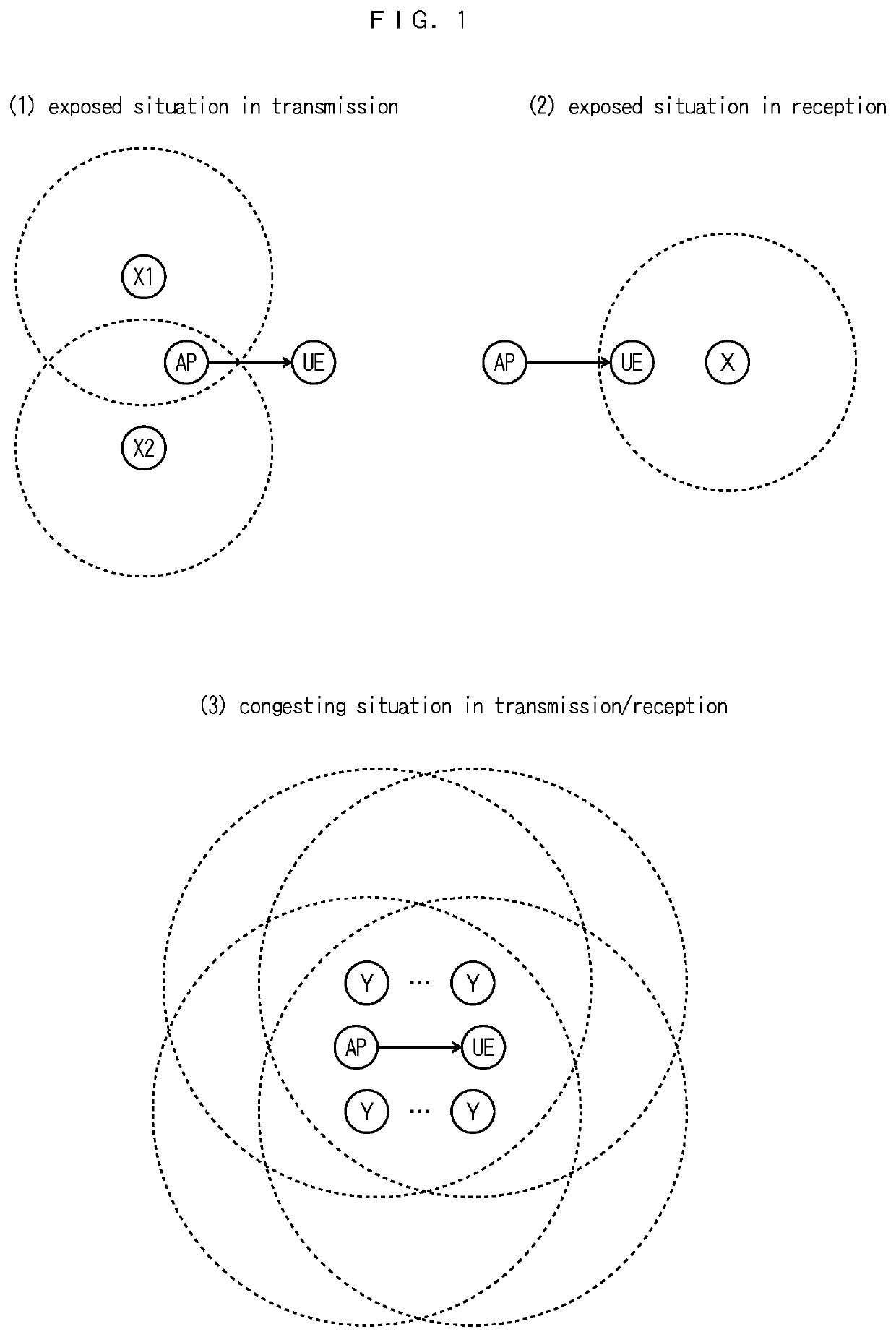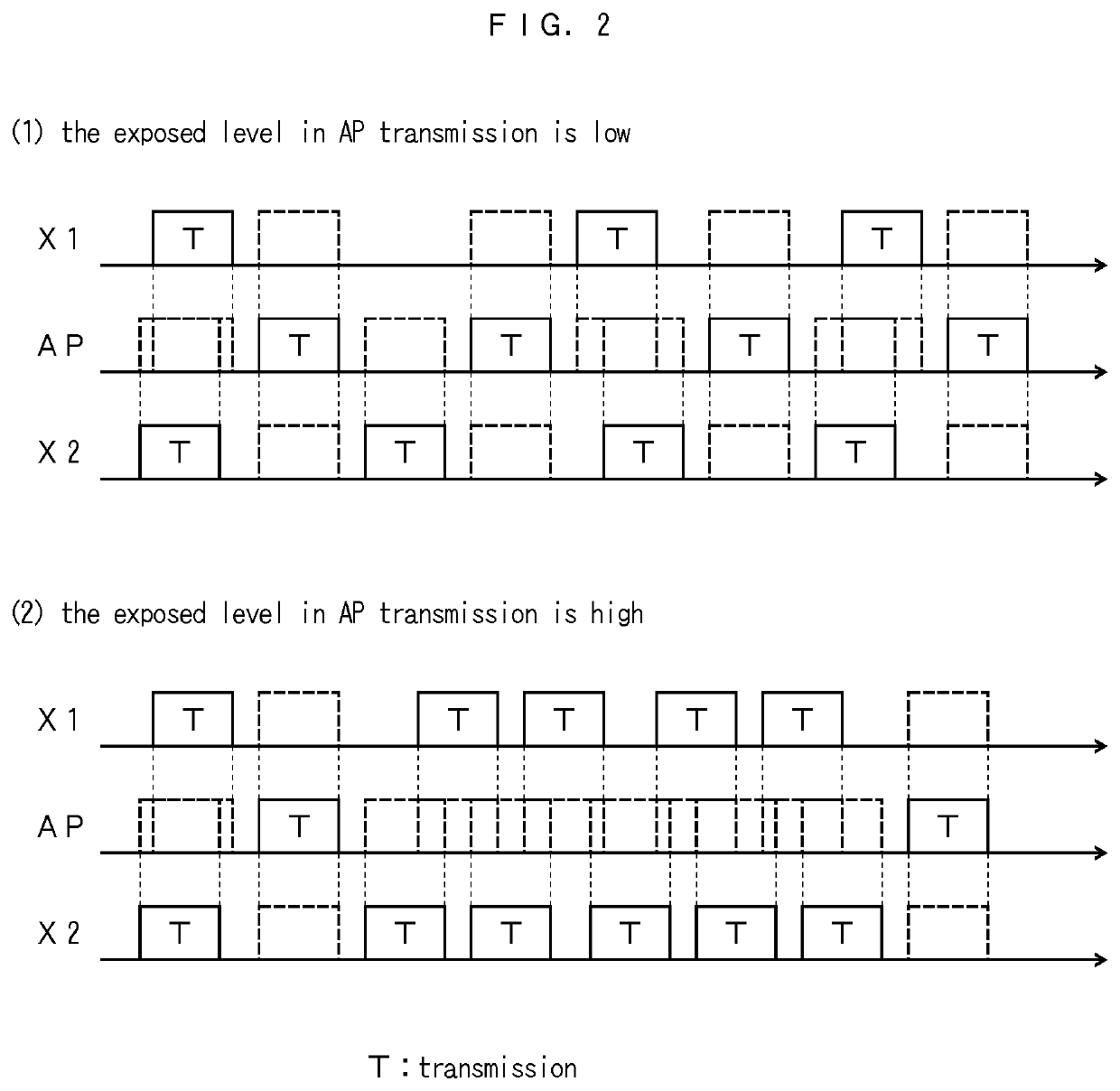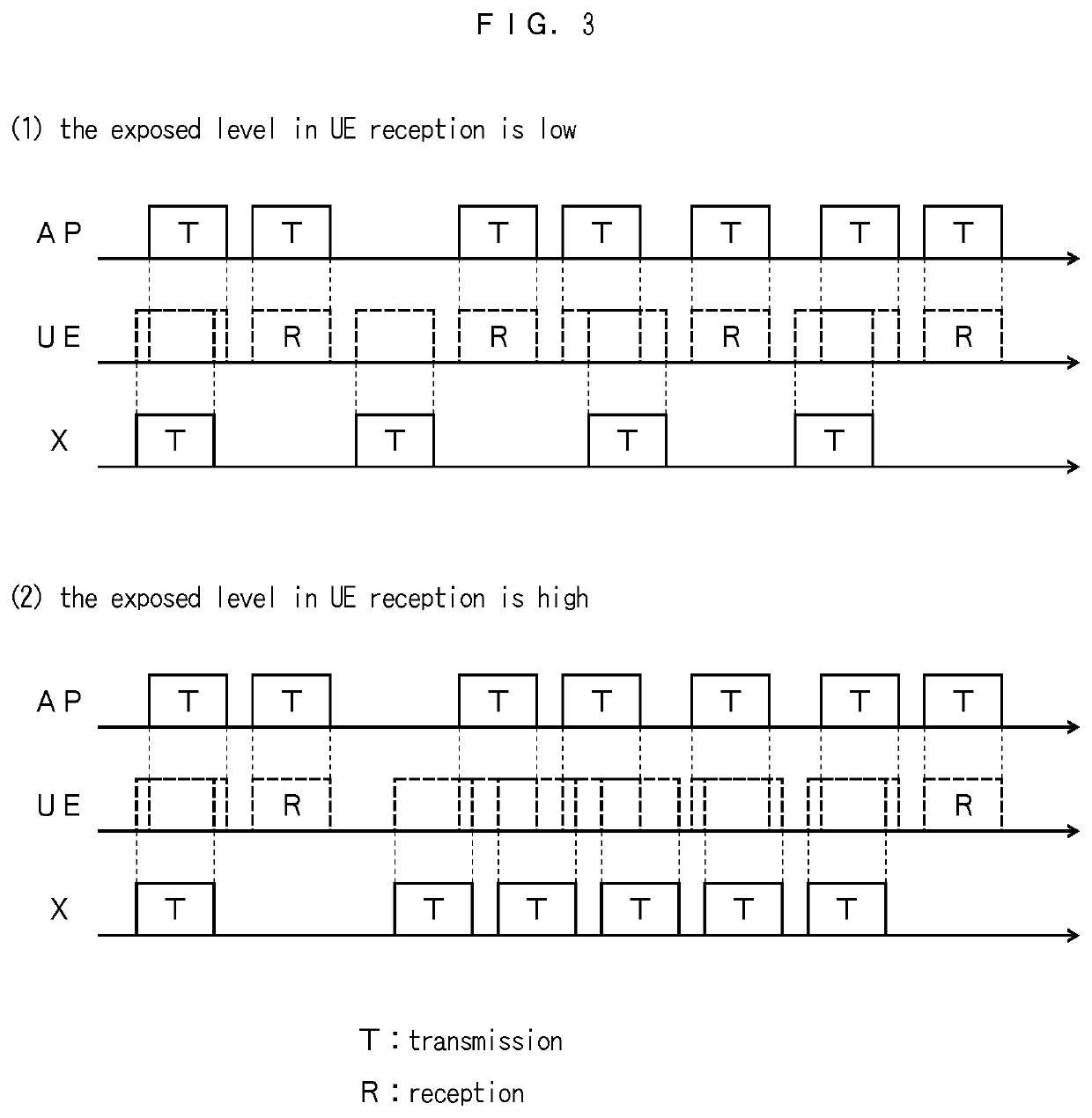Wireless communication system and wireless communication control method
- Summary
- Abstract
- Description
- Claims
- Application Information
AI Technical Summary
Benefits of technology
Problems solved by technology
Method used
Image
Examples
example 1
of a Control Procedure for the UE, which is Based on the Required Quality of the UE
[0075]FIG. 6 illustrates Example 1 of a control procedure for the UE, which is based on the required quality of the UE. Note that it is assumed that the UE is already connected to the AP.
[0076]In FIG. 6, the UE calculates the beacon signal transmission delay α from the reception history of the beacon signal that is transmitted from the connected AP (S1). The beacon signal that is scheduled for transmission at the TBTT, although delayed according to a CSMA / CA procedure in the AP, is normally transmitted by the next TBTT Therefore, the TBTT is recognized in the UE, and thus the beacon signal transmission delay α can be calculated from the Time Stamp that is included in the received beacon signal. At this point, the beacon signal transmission failure f(α) in the AP keeps estimated from the history of the beacon signal transmission delay α (S2).
[0077]Next, the beacon signal transmission delay α is aggrega...
example 2
of the Control Procedure for Determining the Connected AP of the UE, which is Based on the Required Quality of the UE
[0087]FIG. 7 illustrates Example 2 of the control procedure for determining the connected AP of the UE, which is based on the required quality of the UE. At this point, when the UE is not connected to the AP, when a roaming procedure for make a connection to a new AP is started, when instruction to change the network or the connected AP is received in Example 1 of the control procedure, or in other cases, a procedure for searching for a new AP that satisfies the required quality is described.
[0088]In the same manner as in Example 1 of the control procedure, the judgment threshold S is set against which it is judged whether or not the exposed level in transmission that is based on the beacon signal transmission delay α can satisfy the required quality, and the judgment threshold R is set against which it is judged whether or not the exposed level in reception that is b...
example 3
of the Control Procedure for the AP, which is Based on the Expected Quality of the AP
[0098]The AP can change a channel that is to be used for communication. Therefore, when the AP itself is in the exposed situation in transmission, in some cases, the exposed situation in transmission can be avoided by changing a channel. However, although the exposed situation in transmission is entered, when the exposed level in transmission is low and the expected quality of the AP is ensured, there is no need to perform channel control. It is noted that as the expected qualities of the AP, in the same manner as in Example 1 of the control procedure, throughput, latency, jitter, packet loss, and the like are given.
[0099]FIG. 8 illustrates Example 3 of the control procedure for the AP, which is based on the expected quality of the AP.
[0100]In FIG. 8, the AP calculates the beacon signal transmission delay α from the transmission history of the transmitted beacon signal (S31). It is noted that the AP...
PUM
 Login to View More
Login to View More Abstract
Description
Claims
Application Information
 Login to View More
Login to View More - R&D
- Intellectual Property
- Life Sciences
- Materials
- Tech Scout
- Unparalleled Data Quality
- Higher Quality Content
- 60% Fewer Hallucinations
Browse by: Latest US Patents, China's latest patents, Technical Efficacy Thesaurus, Application Domain, Technology Topic, Popular Technical Reports.
© 2025 PatSnap. All rights reserved.Legal|Privacy policy|Modern Slavery Act Transparency Statement|Sitemap|About US| Contact US: help@patsnap.com



